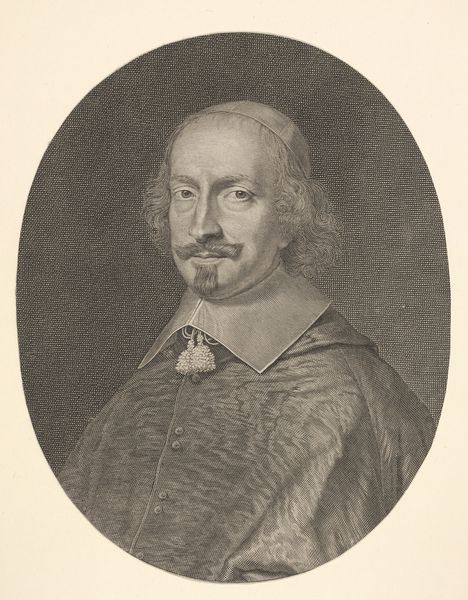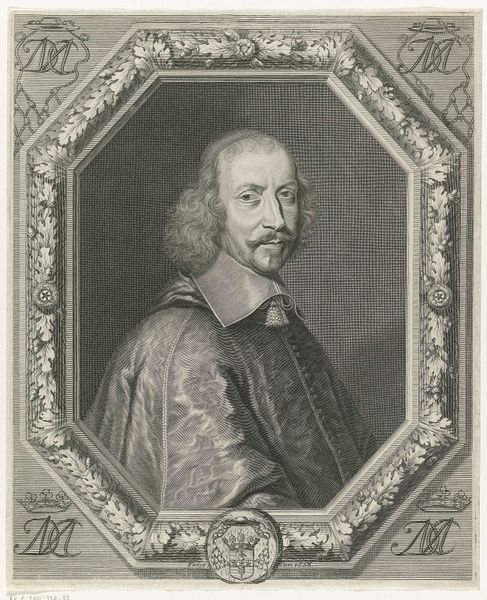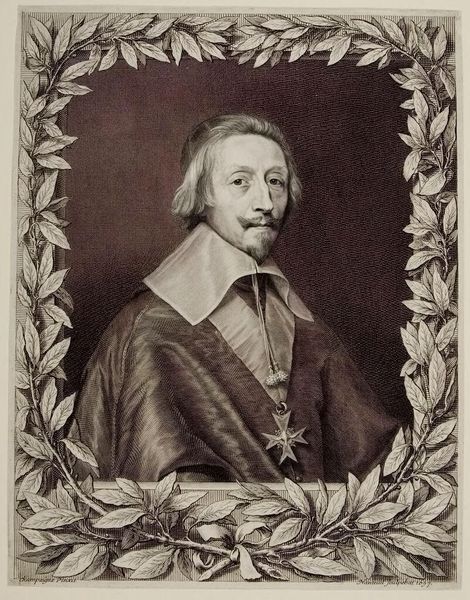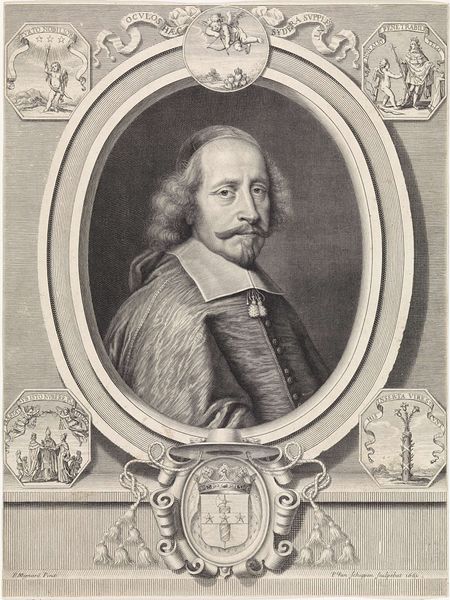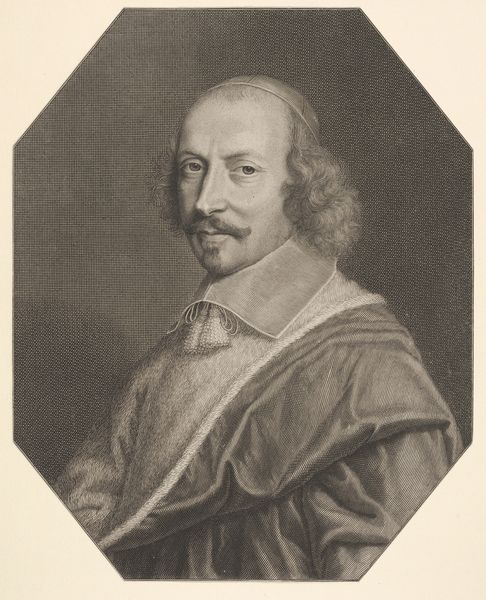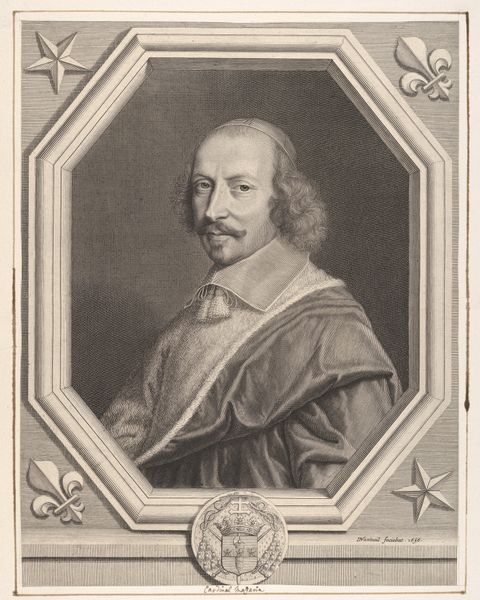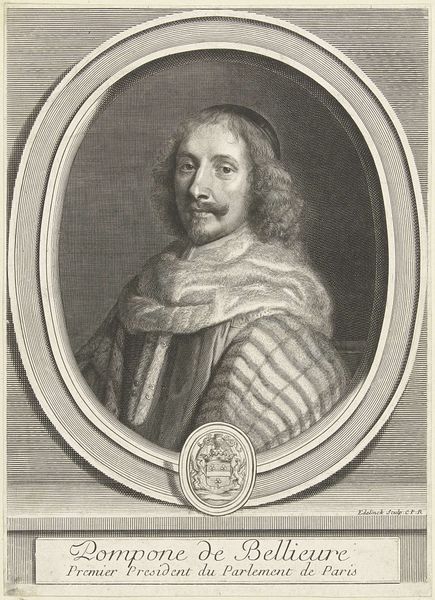
Copyright: CC0 1.0
Curator: Robert Nanteuil’s portrait of Cardinal Mazarin is a striking example of 17th-century printmaking. I’m drawn to the intricate detail achieved through engraving. Editor: The overall mood is somber, almost severe. The limited tonal range amplifies the Cardinal's commanding presence, doesn't it? What’s your take on Nanteuil’s choice of materials? Curator: Well, the engraving process itself, the labor involved, speaks to the status of the sitter. Consider the paper, the inks—these were luxury items, signaling wealth and power. Editor: Absolutely. Mazarin held immense political sway, and the proliferation of his image through prints like these served a clear purpose: solidifying his authority and crafting a lasting legacy. It makes you wonder about the role of art in shaping public perception. Curator: Indeed. And look at the fasces in the decorative border – symbols of power, authority, and collective strength – so very tied to ideas about image-making and power, and the role of the artist in society. Editor: A fascinating glimpse into the intersection of art, power, and material culture. I find it truly compelling.
Comments
No comments
Be the first to comment and join the conversation on the ultimate creative platform.

